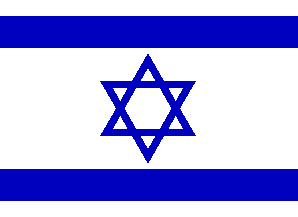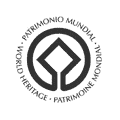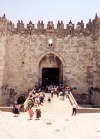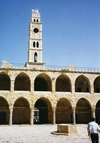 |
 |
UNESCO
World Heritage sites in Israel |
The World Heritage Committee has inscribed the following properties on the World Heritage List:
 |
1981 Old City of Jerusalem
and its Walls (site proposed by Jordan)
As a holy city for Judaism, Christianity and Islam, Jerusalem has always been of great symbolic importance. Among its 220 historic monuments, the Dome of the Rock stands out: built in the 7th century, it is decorated with beautiful geometric and floral motifs. It is recognized by all three religions as the site of Abraham's sacrifice. The Wailing Wall delimits the quarters of the different religious communities, while the Resurrection rotunda in the Church of the Holy Sepulchre houses Christ's tomb. |
 |
2001 Masada
Masada is a rugged natural fortress, of majestic beauty, in the Judaean Desert overlooking the Dead Sea. It is a symbol of the ancient kingdom of Israel, its violent destruction and the last stand of Jewish patriots in the face of the Roman army, in 73 A.D. It was built as a palace complex, in the classic style of the early Roman Empire, by Herod the Great, King of Judaea, (reigned 37 – 4 B.C.). The camps, fortifications and attack ramp that encircle the monument constitute the most complete Roman siege works surviving to the present day. |
 |
2001 Old City of Acre
Acre is a historic walled port-city with continuous settlement from the Phoenician period. The present city is characteristic of a fortified town dating from the Ottoman 18th and 19th centuries, with typical urban components such as the citadel, mosques, khans and baths. The remains of the Crusader town, dating from 1104 to 1291, lie almost intact, both above and below today's street level, providing an exceptional picture of the layout and structures of the capital of the medieval Crusader kingdom of Jerusalem. |
 |
2003 The White City of Tel-Aviv
- the Modern Movement
Tel Aviv was founded in 1909 and developed under the British Mandate (1920-1948). The White City was constructed from the early 1930s till 1948, based on the urban plan by Sir Patrick Geddes, reflecting modern organic planning principles. The buildings were designed by architects who were trained in Europe where they practiced their profession before emigrating to Palestine. They created an outstanding architectural ensemble of the modern movement in a new cultural context. |
| 2005 Biblical Tells – Megiddo, Hazor, Beer Sheba | |
| 2005 Incense Route / Cities in the Negev - Haluza, Mamshit, Avdat and Shivta | |
 |
2008 Baha’i Holy Places in Haifa and Western Galilee |
The Convention states that a World Heritage Committee "will establish, keep up-to-date and publish" a World Heritage List of cultural and natural properties, submitted by the States Parties and considered to be of outstanding universal value.
One of the main responsibilities of this Committee is to provide technical co-operation under the World Heritage Fund for the safeguarding of World Heritage properties to States Parties whose resources are insufficient.
States Parties can request international assistance under the Fund for the preparation of tentative lists and nomination forms, expert missions, training of specialized staff, and supply of equipment when appropriate; they can also apply for long-term loans and, in special cases, non-repayable grants. Requests must concern work necessary for the preservation of cultural or natural sites included in the World Heritage List or assistance to national or regional training centres.
Emergency assistance is also available under the Fund in the case of properties severely damaged by specific natural or man-made disasters or threatened with imminent destruction.
source: www.unesco.org

